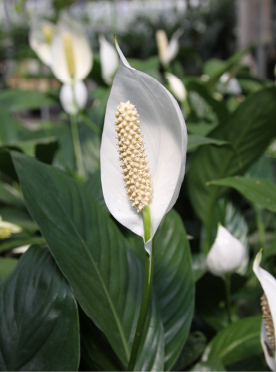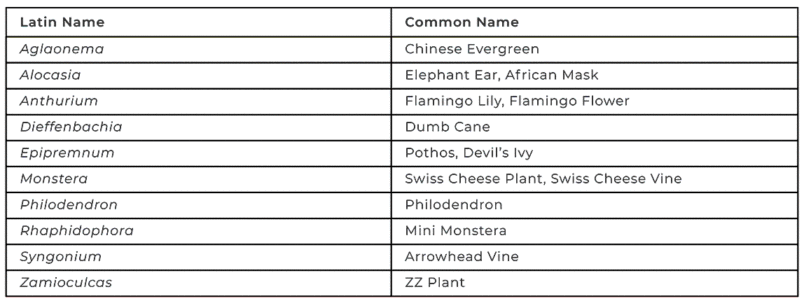HOUSEPLANTS
WHAT IS AN AROID?
Aroids are plants from the family Araceae and include many popular houseplant varieties such as Monstera, Philodendron, Agloanema, Alocasia and many more! Recently, many of these plants have become hugely popular in the houseplant world and for good reason! Many have stunning leaves with interesting texture, variegation, or shape, unique growth habits, lower light tolerances, and most common species are easy to care for.
Classification by Flower
Most plants are categorized into their families based on their flower, and Aroids are no different! Even though most Aroids are grown for their foliage over their flower, the flower is immediately distinguishable by its shape (though it typically isn’t very showy). The flower consists of two parts: the spadix and the spathe. The spadix is a large spike covered in tiny flowers, somewhat resembling a bumpy stem. The spathe looks like a large flower petal, but is actually a bract - a modified leaf that is usually brightly coloured to attract pollinators to the flower.

If you want to see an example of an Aroid flower, look at an Anthurium (Flamingo Lily) or a Spathiphyllum (Peace Lily)! These genus are grown mostly for their bloom and have a very clear spadix and spathe. Another great example of a flowering aroid that you may recognize is Amorphophallus titanum, also known as the Corpse Flower. It is the largest unbranched inflorescence in the world and very appropriately named as it smells like rotting flesh when it blooms. These flowers are very rare, and are typically only found in botanical gardens and conservatories - the most local one to us is found at the Toronto Zoo!
Species Inclusions
There are almost 4000 different species of Aroids. These are some of the most common ones:





